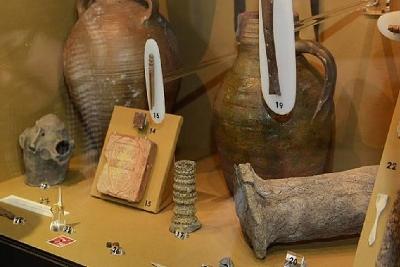Medieval wealth and pilgrims at Lynn Museum
Medieval Lynn was a wealthy port, well positioned at a point where a major river system met the Wash.

Wool and finished cloth were produced locally and the fertile land nearby produced crops. The town was a partner of the Hanseatic League and attracted merchants and craftsmen from Europe and beyond. West Norfolk's prosperity was reflected in some fine buildings, and four friaries were established in the area during the 13th Century. Many of the medieval buildings survive, although much of the Friaries' architecture was destroyed during the Reformation.
There is a fine collection of Pilgrim badges, purchased by those on Pilgrimages to Rome, the Holy Land and beyond. Pilgrims passed through the town on their way by ferry to the shrine of Our Lady of Walsingham. The museum has a larger collection of medieval objects, including tiles, metal work, and stone carving. A pottery based at Pott Row, west of the town, produced a wide range of cooking pots, jugs, and bowls which were exported to Belgium and France.





